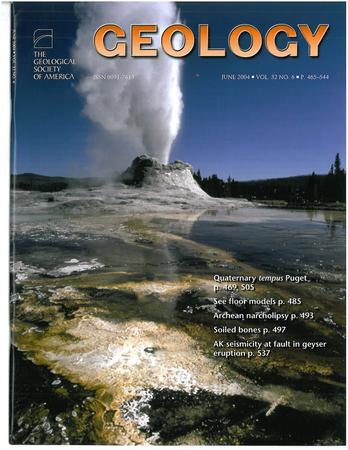前植被河板砂解释:1.2 Ga快速迁移、蜿蜒和高弯曲度的河流的河床和坝状建筑证据
IF 4.6
1区 地球科学
Q1 GEOLOGY
引用次数: 0
摘要
陆生植物的志留纪辐射从根本上改变了河流地层,并经常与河面的移动有关。最近的研究挑战了长期以来的观点,即未出现植被的河流主要是辫状的;然而,地质证据表明,前志留纪河流地层的横向合并、片状砂岩特征与植被前的曲流河流相协调的可能性仍然有限。在这里,我们通过对保存最完好的中元古代河流系统之一的1.2 Ga Clachtoll组(Stoer Group, NW Scotland)的详细露头尺度分析,验证了一种假设,即前志留纪地层记录了以快速洪漫平原改造为特征的流动、蜿蜒和高弯曲的流浪河流的证据。分析表明,沙洲主要与沙丘古流方向呈垂直方向(即侧向增生),沙丘古流数据的圆形变化与现代曲流和高曲度的流线型相一致,河道体孤立于泥质洪泛平原内,与泥质洪泛平原有明显的接触。重要的是,我们发现87%的河流坝保存得很差,没有证据表明保存完好的河流坝,这表明河流的流动性很快。这些发现支持了这样一种解释,即在前植被地层中横向扩展的、保存较差的砂岩可能代表了易发生快速洪泛平原改造的流动曲流和高曲度徘徊河流的沉积物。本文章由计算机程序翻译,如有差异,请以英文原文为准。
Pre-vegetation fluvial sheet sands explained: Bedform and bar architecture evidence for 1.2 Ga rapidly migrating, meandering, and high-sinuosity wandering rivers
The Silurian radiation of land plants fundamentally altered fluvial stratigraphy and is often associated with a shift in river planform. Recent work challenges the long-held view that pre-vegetation rivers were predominantly braided; however, geologic evidence reconciling the potential for pre-vegetation meandering rivers with the laterally amalgamated, sheet-like sandstones characteristic of pre-Silurian fluvial strata remains limited. Here, we test the hypothesis that pre-Silurian strata instead record evidence for mobile, meandering, and high-sinuosity wandering rivers characterized by rapid floodplain reworking through detailed outcrop scale analysis of the 1.2 Ga Clachtoll Formation (Stoer Group, NW Scotland), one of the best-preserved Mesoproterozoic fluvial systems. Our analysis reveals that bars predominantly accrete orthogonally to dune paleocurrent directions (i.e., lateral accretion), circular variance in dune paleocurrent data is consistent with modern meandering and high-sinuosity wandering river patterns, and channel bodies are isolated within, and in sharp contact with, muddy floodplains. Critically, we find that 87% of fluvial bars are poorly preserved, with no evidence for fully preserved bars, suggesting rapid river mobility. These findings support the interpretation that laterally extensive, poorly preserved sandstones in pre-vegetation strata may represent deposits of mobile meandering and high-sinuosity wandering rivers prone to rapid floodplain reworking.
求助全文
通过发布文献求助,成功后即可免费获取论文全文。
去求助
来源期刊

Geology
地学-地质学
CiteScore
10.00
自引率
3.40%
发文量
228
审稿时长
6.2 months
期刊介绍:
Published since 1973, Geology features rapid publication of about 23 refereed short (four-page) papers each month. Articles cover all earth-science disciplines and include new investigations and provocative topics. Professional geologists and university-level students in the earth sciences use this widely read journal to keep up with scientific research trends. The online forum section facilitates author-reader dialog. Includes color and occasional large-format illustrations on oversized loose inserts.
 求助内容:
求助内容: 应助结果提醒方式:
应助结果提醒方式:


